How Graphic Design Impacts Consumer's Perception of a Brand
The way your target audience perceives your company has a significant impact on your business. Not only its image but, more importantly, brand perception directly influences your potential clients' willingness to invest in your solutions.
According to several scientific studies, the brand image directly affects perceived product quality and value. Even more importantly, it correlates with consumers' purchase intention. It could also be a key component of brand loyalty, which is particularly important in today's world of unlimited consumer choices.
But how can you utilise graphic design to impact consumers' perception of your brand? And is there genuinely that big of a connection between a brand's visual identity and its success at converting new customers?
If you're looking for tips on using graphic design to impact your target audience's perception of your business, here's everything you need to know about this crucial aspect of branding.
Table of Contents
What Is Brand Perception and Why Is It Important?

At its core, brand perception represents the way people see your brand. It encompasses their beliefs, attitudes, and opinions and directly impacts your organisation's reputation.
Furthermore, brand perception affects how people think about your products — their value and quality. Plus, it sets expectations regarding your customers' brand interactions, shopping experience, and your organisation's dedication to solving consumer pain points/resolving customer issues.
However, many business owners forget that a well-thought-out branding strategy isn't just about how your target audience sees your business. Brand perception directly influences your company's chances of success.
Brand Perception Affects Consumer Trust and Loyalty
One of the most significant ways brand perception impacts your business's chances of growth is that it directly influences consumer trust.
Looking at consumer behaviour research, you'll find that people shop exclusively from trustworthy brands. A 2021 survey revealed that:
- For 81% of consumers, brand trust is a deciding factor impacting their purchase decisions.
- 7 in 10 consumers will buy more from the brands they trust.
- 61% will recommend them to their peers.
- 40% will post positive reviews or comments on social media.
So, to convert new customers (and retain old ones), you must establish your organisation's reputation as dependable, credible, user-oriented, and highly competent at solving consumer pain points.
Your Organisation's Reputation Aids Brand and Product Differentiation
Whether your business operates in a competitive industry or not, it's safe to say that your long-term success hugely depends on standing out from your competitors.
You can effectively differentiate your business and products by managing your brand's reputation. You can transform them into the go-to choices in your niche, significantly outperforming your competitors.
Suppose you're not convinced that differentiation matters; just think about this. In an unfamiliar environment, 90% of consumers will purchase a product made by a brand they've encountered before. Moreover, consumer behaviour shows that, when performing an online search, 82% of people choose a familiar brand for their first click. This shows how hugely impactful your business' reputation can be in attracting and converting new leads.
Long-Term Brand Resilience
Finally, remember that, in volatile markets, consumers' perception of your brand hugely impacts your business' resilience.
If you can retain your reputation of being a trustworthy, innovative, or aspirational business during tough times, you significantly increase the chances of your customers continuing to choose your products. That, in turn, will prevent losses for your company and reduce the chances of being ousted by your competitors.
How Does Graphic Design Affect Consumer's Perception of a Brand?
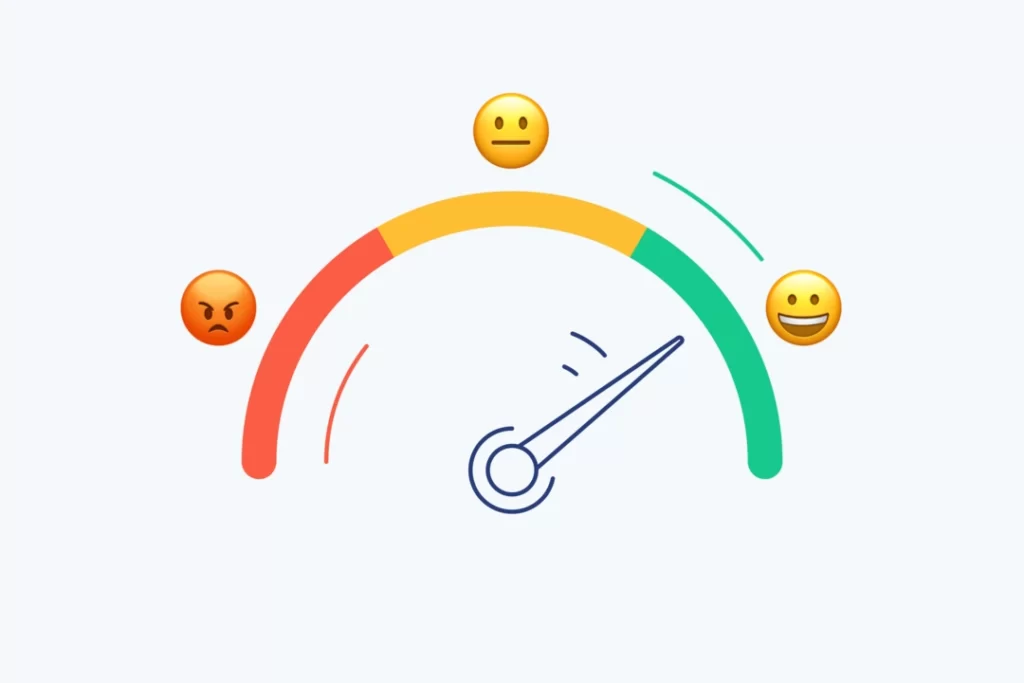
Telling your audience what your company or products are about is one thing. But showing them is an entirely different story. And the truth is visuals say more than words. That's why graphic design is vital to your brand's reputation.
Looking at how people form brand impressions, you'll find that aesthetics and design play a huge part in determining whether they like your business/products.
For example, a study studying people's opinions about websites discovered that as many as 94% of people's first impressions are design-related.
In short, web visitors form an opinion about your business as soon as they land on your website. Your site's design will determine whether they trust your organisation and are willing to invest in your solutions.
And if you look at how people shop nowadays, investing in high-quality graphic design that promotes positive brand perceptions becomes even more essential. For instance, IBM reported a 20% growth in e-commerce as more people flee physical stores and turn to online options. So, while graphic design is essential for brick-and-mortar and digital stores, it comes to the forefront when grappling for a presence amid thousands of other online retailers.
And remember, you're not competing with the other local mom-and-pop shops. You're also up against giants such as Amazon and Walmart. These brands are most people's first choices when researching and buying products.
With this in mind, you must hire the right graphic design team to help establish and maintain your business's visual identity. That way, you'll have what it takes to grab your audience's attention, get web visitors to trust your business enough to convert and ensure that buyers remember your organisation as a company that's not only aesthetically attractive but also offers a stellar customer experience.
How to Use Graphic Design to Impact Consumer's Perception of Your Brand
Seeing how brand image encourages consumers to purchase your product or service, you must use graphic design to build the brand reputation you want for your business.
The great thing about using graphic design to impact consumer's perception of your business is that you can do this in multiple ways. In addition to the essential elements of your brand's visual identity, you can show that your organisation is trustworthy through colours, typography, and logos. You can also use your website layout and visual content to establish a positive reputation.
Identity design can encourage users to trust you, move them through your sales funnel, and increase conversions.
There are many ways graphic design helps shape consumer perceptions of your brand. Here are the top ways to utilise it in your marketing efforts.
1 – Lay Out Your Brand Strategy
A positive brand image is not simply appearing out of thin air. On the contrary, a professional designer starts the visual branding process long before they sketch a single logo or create your website.
They tell you about your brand's vision, and you want consumers to see your business. They research your market and competitors. They also develop different graphic design methods to help your business reach its goals.
For example, a designer working for a brand like Apple doesn't just decide to use minimalistic web design and visuals. Instead, they study the connection between simple aesthetics and desirability. Moreover, they research the business's core audience — professionals and designers — to identify the graphic elements that will communicate the dependability and aspirational nature of the products. The end visual result is the fruit of meticulous research and strategising. Ultimately, it's what helps Apple stand out from its competitors.
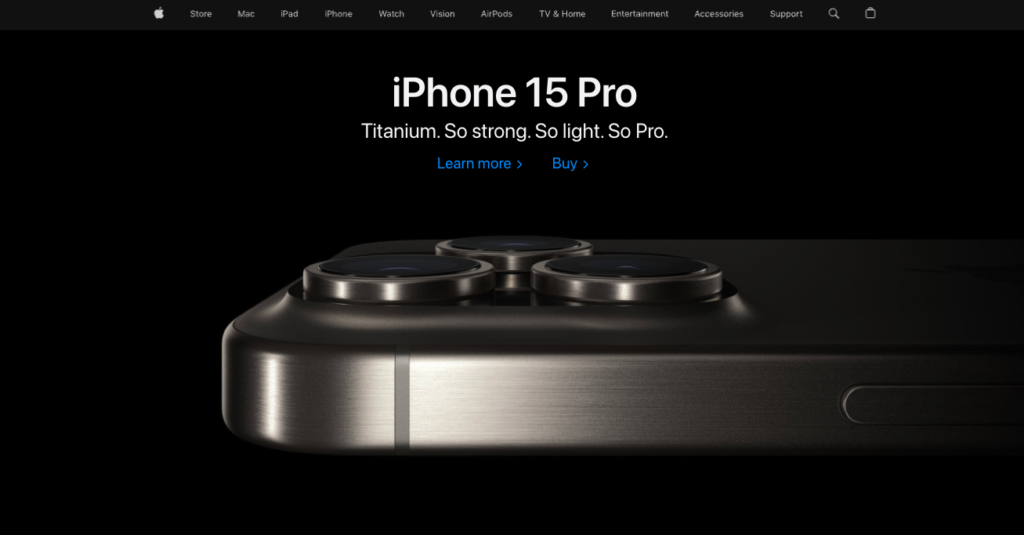
A brand strategy ensures everyone is on the same page. If a graphic designer creates a logo, it meets the standards and objectives of your image.
If a writer creates a piece of content, they know the purpose behind the endeavour and align the layout of the article and webpage with your branding strategy.
Work closely with your graphic designer to develop a style guide you can use no matter who works on a given phase of a project.
2 – Create an Experience
Experiential graphics adapt to the environment and give your customers a three-dimensional experience.
They bring a concept to life that represents your values as a brand and gives users a real vision of who you are.
For instance, a swimsuit store will want to immerse users in a recognisable setting the minute they enter the online (or offline store). If you check out the Speedo homepage, you'll notice this is precisely what the business does.
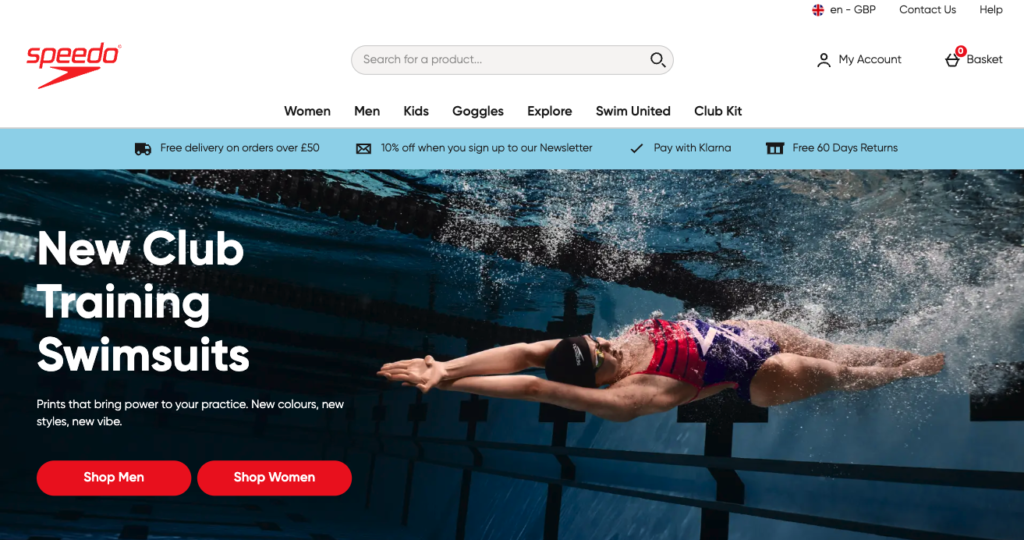
On this webpage, the graphics depict underwater scenes of professional swimmers doing what they do best. Adding sounds to complete the effect would be a step further. And, if you're thinking about experiential elements in physical settings, the brand might even add scent to the entire consumer experience to cement its customers' brand perception.
Think of environmental graphics as an opportunity to involve as many of the consumer's senses as possible.
You want to transport them out of reality and toward the perception you want them to have.
If your brand gains a reputation for creating experiences, people will flock to your stores to see your next display. You can draw in foot traffic simply by offering experiential displays.
3 – Define Buyer and Brand Personas
You might think most of a designer's work involves sketching out prototypes and drawing logos.
However, experienced designers grasp the importance of tapping into user emotions and pain points.
The design process's most significant part may involve the user experience (UX) and figuring out exactly who the target audience is. What makes your typical customer tick?
Study internal customer data, such as location, gender, age, and occupation. Next, look at website data, such as who visits your site and where the traffic comes from.
Are most of your users from the United States? If they are from other countries, you should know the primary language and whether you meet their unique needs.
Next, dig into some generic information about the type of client you attract. What are the psychographics behind every kind of person?
A married stay-at-home mother may have different concerns than a working single mom. A career professional will have needs that vary from a freelance entrepreneur.
Once you understand what makes each buyer type tick, create a unique persona outlining the basics.
The persona should include personality traits, pain points, emotions driving the person, possible preferences for social media, colours, and whether they access your site via a desktop computer or a mobile device.
4 – Study the Competition
Spend time looking at your competition. What colours do they utilise? Think about industry standards. You'll see a lot of red for restaurants, as it creates excitement.
Some studies have also shown red can create hunger in people. As it hints at reliability, you'll see deep blues for banks and financial institutions.
Think through the colour palettes of your competitors. Should you aim for a similar palette due to tradition or emotions? If so, how can you stand apart from the crowd while still meeting user expectations and tapping into the perception of being reliable, fun, or trustworthy?
Take careful notes on the language each company utilises. For example, some words can drive users to action.
If you look at a brand like Equinox, you'll notice that it uses headlines to address its target audience's pain points and wants. The “Where luxury and fitness meet” headline is perfect for this brand to build excitement around its services. Plus, it appeals to Equinox's target audience's emotions, promising an aspirational workout experience.
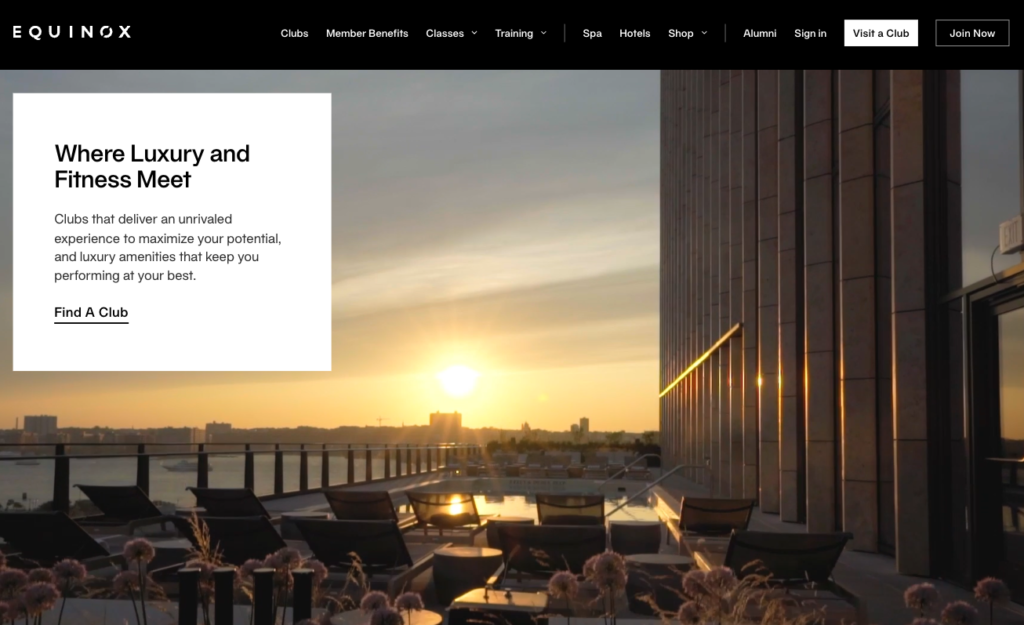
Also, don't forget to look at everything through the UX and how it impacts each person who lands on your page. What are the benefits of doing business with you over another company?
Does your website's design hint at an exclusive and enjoyable customer experience? Or does it require your prospects to deal with a clunky UX, potentially guiding your audience to perceive your products as needed to deliver more value?
5 – Focus on Building Trust
Edelman's 2019 Trust Barometer report surveyed 16,000 consumers online. Around 81% of respondents stated they had to trust a brand before they'd buy from it.
So, if you want your target audience to consider buying from your brand, you must do everything possible to position your business as a credible organisation.
One easy way to do this is to use graphic design elements as trust signals. A simple badge and a bit of copy can go a long way in ensuring your audience understands your brand's dedication to customer satisfaction. It can be the trigger point for ensuring web visitors choose your business over your competitors.
To see how easily you can implement this visual branding strategy, just check out Moto Machines. The brand uses three trust badges on its homepage to communicate user benefits. It promises bike support, parts for 700+ models, and installation assistance.
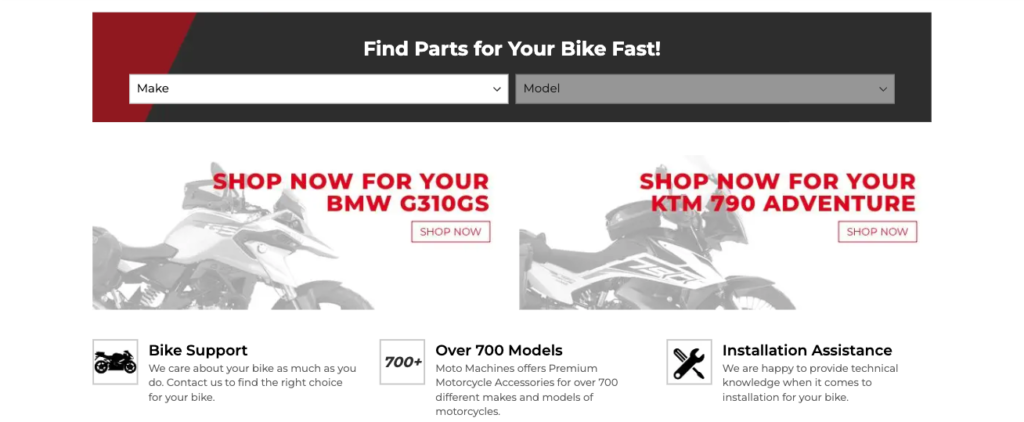
The fact is, this brand's competitors probably offer similar benefits. However, by pointing these perks out, Moto Machines ensures that its target audience perceives it as the best choice in the industry, thus boosting conversions and guaranteeing quicker expansion.
6 – Seek Consistency
One top way to gain consumer trust is by being consistent in your messaging and brand image.
Do you trust people who change their story every few minutes?
You must show you are trustworthy by offering the same deals, transparency, and policies across all platforms.
For example, if you offer 15% off as a limited offer for new customers, don't give everyone 15% off all the time.
The discount should indeed be limited and only available to new customers. Otherwise, you say one thing and do another. Who can trust such double-talk?
If you have a policy that customers can return an item for any reason within 30 days, don't suddenly change the length to 15 days or tell a customer their excuse isn't good enough.
Set your policies and stick to them as closely as possible.
In addition to consistency in rules and procedures, seek consistency in your brand's voice.
Who are you, and what kind of language portrays your image to your audience? If you're known as a youthful and fun brand, don't try to dig into serious topics and take a sombre tone.
Finally, don't forget that your visuals must also be consistent. Using the same colour palette, similar visuals, and typography will ensure your audience knows what to expect from your business. Plus, sticking to a single aesthetic style pays off because colour consistency increases brand recognition by up to 80%.
For inspiration on visual consistency, look up to brands like McDonald's, which consistently use the same palette throughout their online channels, including their websites and social media profiles.

7 – Pay Attention to Reviews
You can learn much about how your customers see your company by reading reviews.
Take the time to look at what people post on Google, Facebook, Yelp!, and other review sites. Additionally, data from customer service calls will be gathered.
What are the biggest complaints your agents receive? How can you fix those problems so your clients walk away with a positive experience they can share with others?
Great graphic design should reflect your existing customers' experience with your brand. More importantly, it should use your customers' experiences to inform how your business presents itself — whether by using positive feedback to build customer trust or learning from negative customer experiences to improve how you manage your audience's expectations.
For instance, if you look at brands like Intercom, you'll notice that these SaaS companies regularly use customer feedback as a graphic design element to impact first-time web visitors' perception of the brand.

Furthermore, remember that any complaint you see online is likely shared with the person's friends and family. Word-of-mouth marketing is powerful for brand perception.
You want your patrons to tell people how amazing you are and not the alternative. So, even if you get a negative review, don't try to avoid it. Instead, it can be used as an opportunity for reputation management. Who knows, successfully resolving a client's issue might turn out to be the type of marketing your business needs. It could cement your organisation's reputation as a customer-first company that genuinely cares about making its clients happy.
Finally, take the time to study what people say about your competitors. What things do they sing their praises about? Also, look at what complaints people have about your competitors. Can you excel in these areas and offer consumers something better than other organisations do?
8 – Use Beautiful Images
Researchers estimate that 65% of people are visual learners. Even those who learn via auditory or tactile experiences may find that adding images improves their retention.
Graphic designers are adept at creating and moulding photos and drawings to their best effect.
Whether you're creating an advertisement or a website, adding appropriate and relevant visuals impacts consumers. For instance, if you check out the Loro Piana homepage, you'll see that the header image perfectly communicates the sense of quiet luxury buyers expect to receive when purchasing from the brand.

Remember that you can tell a story with a photo or video. You can point the way through the buyer's journey with arrows and animations. So, think about the message you want to send about your brand and what images highlight the message best.
Stay away from anything negative and seek only positive imagery for your marketing.
You can also tap back into consistency by overlaying the primary brand colour on top of photographs or seeking a particular size or orientation for any picture used to promote your brand.
With popular social media sites such as Snapchat and Instagram using mainly images to communicate, you'll want to develop a style guide for each platform.
Ensure you remain consistent and project the message you want people to retain about your company.
9 – Embrace Package Design
One of your roles as a graphic designer may be coming up with the perfect package design.
It isn't easy to plug all branding elements into one little package. But you can accomplish the feat with some creativity and focus. Moreover, by using package design to impact consumer's perception of your brand, you can transform ordinary products into some of the most sought-after solutions in your niche.
Think about what surrounds your product. Are they located on store shelves? What is the placement of the item concerning other brands? What colours and images do competitors use, and how can you stand out and grab user attention amid a sea of choices?
If you sell via mail only, think about how the item appears when it arrives. Is it easy to open? Will the packaging keep everything in place so products don't shift during shipment?
Consider logo placement as well. Well-known brands often place their logo near the top of the page, but some consumers prefer smaller companies to set it lower down.
In addition to the outside packaging, think about the box you use for mail orders. Does it reflect your brand image?
How will those transporting the package perceive you as a company? Some examples of brands doing a great job with branding and outside boxes include Chewy and Hello Fresh!.
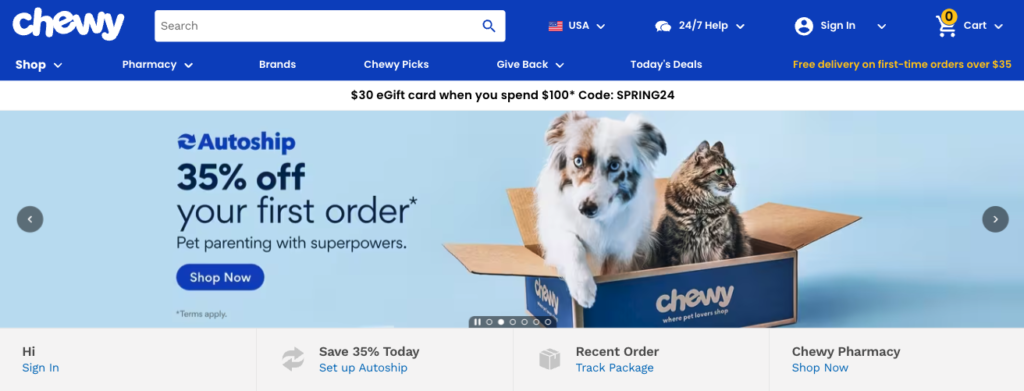
They use their company colour palette and logo to express what people get when they order from them.
The customer sees the box, but so does the mail carrier and anyone who handles the package along the way. Neighbours might even spot the delivery and wonder about the service.
Finally, don't forget that some of your customers may want to keep your packaging as decorative or aspirational. Think about how many people hold onto their bright orange Hermes shopping bags, using them as accessories. Or consider how some people use the latest Rolex catalogues and magazines as coffee table books.
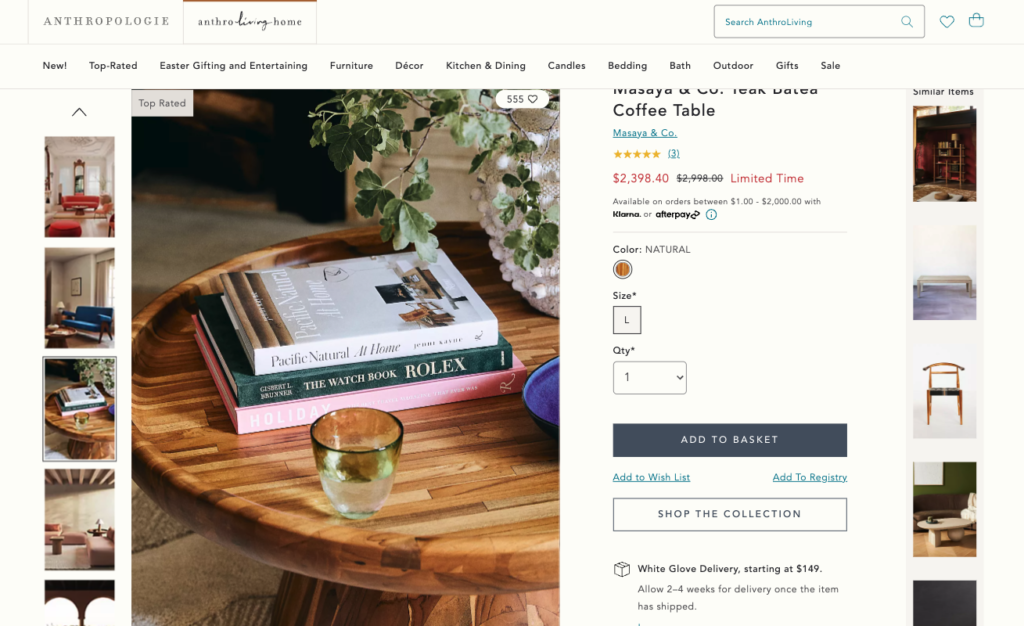
10 – Tap into Personal Values
Recent research suggests we choose brands based on visual cues that are unique to each individual.
However, some of us share similarities due to culture, family dynamics, or the area of the country we live in.
Preference-based judgments come from the prefrontal cortex, striatum, midbrain, and hippocampus, causing us to place more value on some brands than others.
The reason can be a simple memory of always eating a particular brand as a family.
While you can't control every aspect of how people perceive your products, the more you know about your users, the more you can cater to their needs.
Graphic designers should create product labels and promotions that tap into users' emotions, nostalgia, and profound needs.
The UX of your website should consider your typical customer. If the site's usability distracts from your messaging, you risk losing people before they realise they need to buy what you sell.
Consider the general values your users hold dear, then expand on those by separating your audience into segments and speaking to individual needs.
Graphic Design Plays a Vital Role
Although brand perception is about far more than your company's visual aspects, design plays an enormous role in how people see your brand.
Take the time to understand your users' needs. Fix any potential problem areas. And always strive to offer a positive experience no matter where users encounter your business name.
When someone sees your logo, you want the graphic element to evoke positive emotions. So, invest in an ongoing effort to establish your brand's visual identity and do your best to make a connection between your brand's visual identifiers and positive emotions. Finally, practice consistency. That way, people will remember your business and share their positive experiences with their peers.
Remember, consumer sentiment and behaviour are not always predictable. However, by ensuring that your branding strategy is on-point, you will reach, engage, and convert your target audience. More importantly, you'll delight them with a stellar experience, which will grow your business and ensure its resilience in the coming years.
FAQs
How does graphic design influence a consumer's initial impression of a brand?
Graphic design plays a crucial role in shaping a consumer's initial perception of a brand. Well-crafted visuals, logos, colour schemes, and typography can instantly convey a brand's personality, values, and professionalism, influencing whether a consumer perceives the brand as trustworthy, modern, or appealing.
How can graphic design help a brand stand out in a crowded market?
Effective graphic design can help a brand differentiate itself from competitors and stand out in a crowded market. Unique and memorable visuals, such as a distinctive logo or packaging design, can make a brand more recognisable and memorable to consumers, helping it gain a competitive edge.
How can graphic design communicate a brand's values and messaging?
Visual design can be a powerful tool for communicating a brand's values and messaging to consumers. The choice of colours, imagery, and typography can evoke specific emotions and associations aligned with the brand's identity. For example, a natural, earthy colour palette and organic shapes may convey environmentally-conscious values.
How does graphic design impact a brand's perceived quality and professionalism?
High-quality graphic design can significantly enhance a brand's perceived quality and professionalism. Polished visuals, consistent branding across all touchpoints, and attention to detail in design elements can give consumers the impression that a brand takes pride in its products or services and values quality and professionalism.
How can graphic design help build brand loyalty and recognition?
Consistent and recognisable graphic design elements, such as a brand's logo, colour palette, and visual style, can help build brand loyalty and recognition over time. As consumers are repeatedly exposed to a brand's visuals, they become more familiar and associative with the brand, increasing the likelihood of repeat purchases and positive brand associations.
How can graphic design adapt to changing consumer preferences and trends?
Graphic design for a brand should be adaptable to changing consumer preferences and trends. Brands should periodically evaluate their visual identity and consider refreshing or updating their design elements to stay relevant and appealing to their target audience. Monitoring design trends and the consumer's perception can help brands decide when and how to evolve their visual branding.
